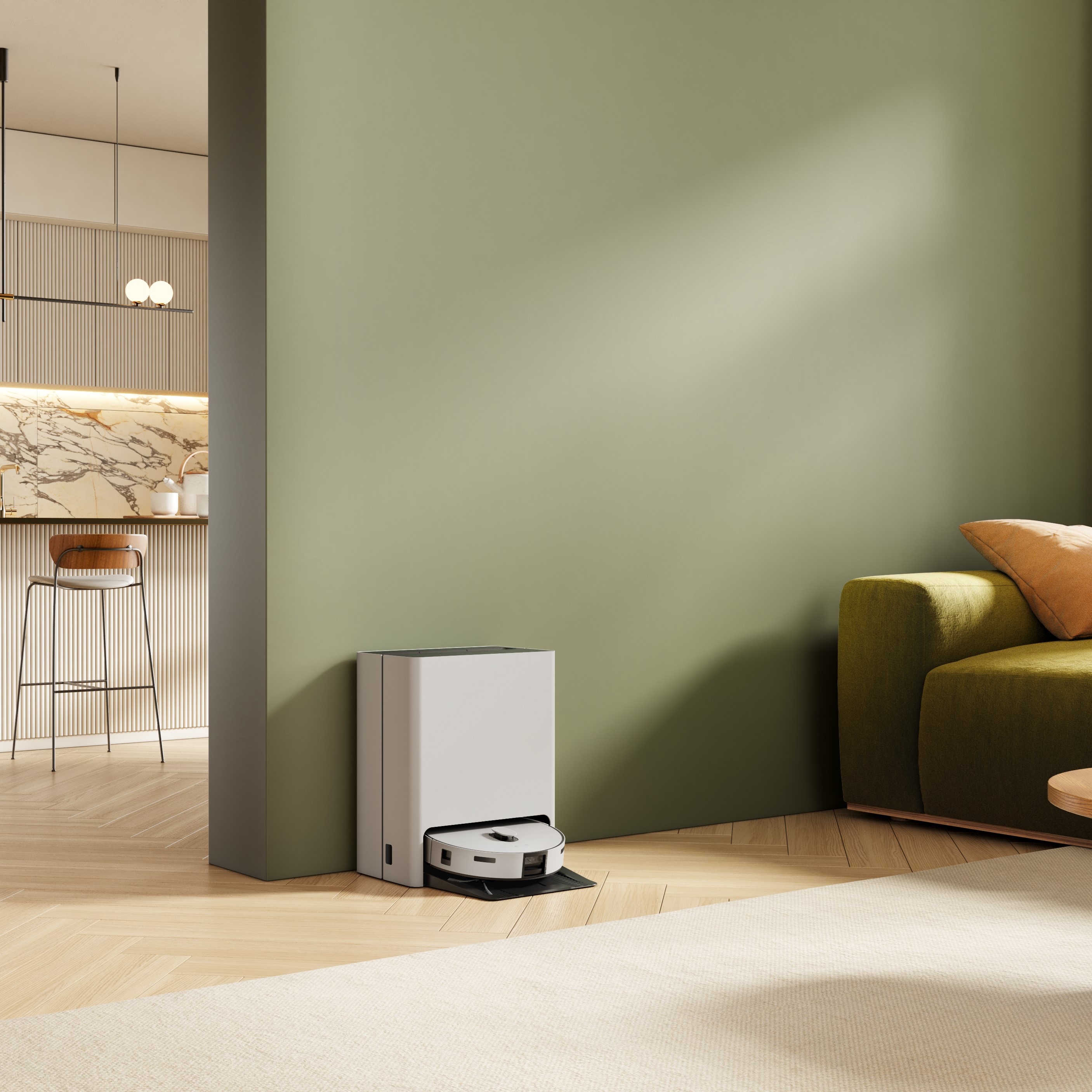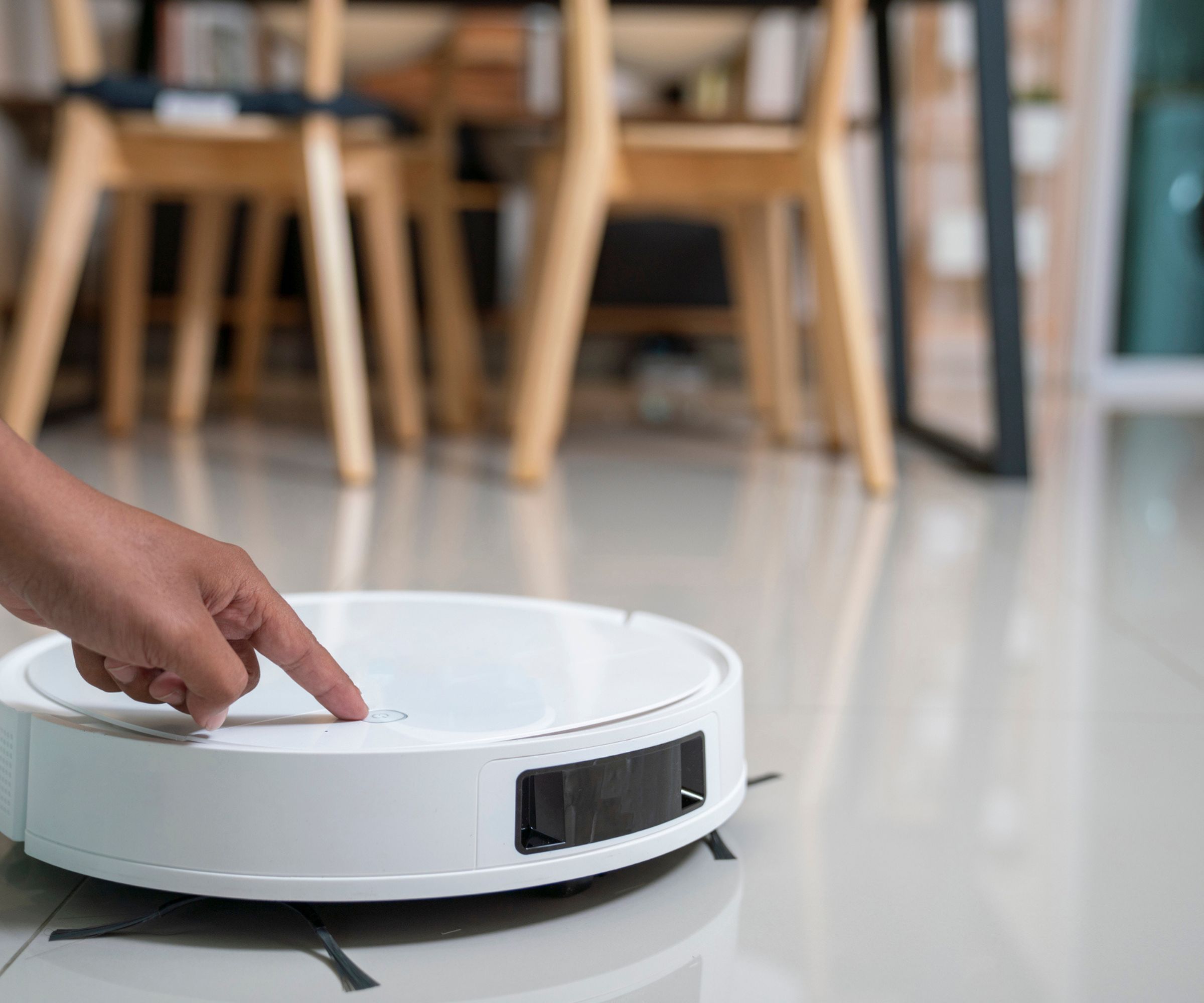
In the few decades that robot vacuum cleaners have existed in, they've certainly advanced. They're not the basic, almost-useless cleaners they used to be. Now, they can vacuum well, mop, build maps of your home, and empty and clean themselves.
The best robot vacuum for one home might be different from another. It all depends on factors like house size or whether you have pets, so before making the decision it's smart to weigh up what's essential and what isn't.
I've tested several robot vacuum cleaners for Homes & Gardens and I've been writing about them for years, so below I've listed the 7 essential factors to consider when determining the right robot vacuum for your home.
How to choose a robot vacuum cleaner
Weighing up all the factors will help you realize which features are essential and which will simply end up costing you more. Robot vacuums are expensive, so it's important to cut the cost down as much as possible.

1. Budget
First things first: think about how much you're willing to spend. Robot vacuums can range anywhere from as low as $150 past $1,500, so balance your maximum budget with a set of features that are a dealbreaker for you.
At the lower end, you'll be able to find basic robot vacuums with limited features, that will only offer a light clean of your floors. You'll still need to do your own vacuuming to keep your floors up to standard. At this low price, you could easily buy a budget robot vacuum that will cause more stress than it's worth, so it's smart to go for trusted brands like the Shark ION AV753 or iRobot Roomba 692.
As you get more expensive, whether it's $500, $800, or $1,000+ - you'll start to see more useful features and comprehensive cleaning power. These features could be a self-empty station, intelligent mapping, a 2-in-1 mop function, edge-to-edge cleaning, and obstacle and pet mess avoidance. The most expensive models will be able to quickly adapt to different floor types too, quickly lifting up mops and adjusting suction when moving from hard floors to carpets.
But make sure to read through each robot's specifications to see whether you're getting a reasonable price. If a vacuum is costing almost $1,000 and has all the features and suction power of a cheaper model, it's probably not worth it.
2. House size
Robot vacuum cleaners require plenty of space to be able to work effectively. They're best suited to open-plan apartments where you won't have to worry about carrying it upstairs or maneuvering around furniture.
Most robot vacuums can create separate maps for upstairs and downstairs, but it's worth considering how often you want to carry it up yourself (as you'll need to be paying attention to when it's finished before moving it), or if you're happy to let it live on one floor.
Those with self-empty stations will need at least a few feet on either side of it (and in front) to be able to work properly, as the robot essentially treats the station as its home and needs to accurately navigate itself back. I'm currently testing the eufy X10 Pro Omni and found it difficult to find a spot with enough space on either side for this reason.
If your home isn't very open, and instead has small, tight spaces, a robot vacuum cleaner might not be the best choice just yet. Instead, one of the best cordless vacuums will offer much more effective cleaning power – and it'll likely be much quicker to vacuum your home this way.
3. Floor type
If your house has a mix of hard floors and carpets, you'll need to consider a robot vacuum that can adapt to both. This is especially important if you're looking for a robot vacuum mop, as those with slower floor recognition and mop lift-up can occasionally wet your carpets or rugs.
For carpet-heavy homes, strong suction power is essential. Dirt and dust embedded into carpet fibers require higher suction power to break loose, and weak, typically low-budget robots will end up leaving a lot behind.
Robot vacuums' suction power is measured differently to standard vacuum cleaners, instead using Pa (Pascals). Reliable robot vacuums tend to have around 3,000 to 6,000 Pa, and you'll need at least 5,000 Pa or more when deep cleaning or tackling carpets.
In our tests. iRobot Roomba's robot vacuums have shown to be the best at adapting to different floor types.

4. Mapping & navigation
Cleaning expert Taylor Riley, founder of Boom Facility Service Advisors and co-owner of Impact Cleaning Professionals, explains that: 'Navigation and mapping capabilities are arguably one of the most important aspects to consider when choosing a robot vacuum.'
'Advanced models equipped with laser or camera-based navigation systems can create detailed maps of your home, allowing the vacuum to clean systematically rather than randomly. This ensures your floor is cleaned throughout and avoids missing spots.'
We've tested plenty of robot vacuums that don't have competent navigation tech, and they end up spinning on the spot and bumping into walls or occasionally missing entire sections of the floor because they misinterpret a mark as an object.
Investing in a robot vacuum is supposed to take time off her hands, especially for those with busy lives or busy households. If a robot can't keep up with kids' toys, pets, or other non-cleanable messes thrown around the house, it probably isn't worth the money.
5. Pets
Leading on from the last point, if you have pets, you should consider a few points.
If your pets shed their fur, you'll need to consider whether the robot can handle that. Hair wrap is a problem that'll end up costing you more time than the robot's saving, so take note of the brands' promises to avoid it and read reviews where possible.
A HEPA filter is also a must-have for pet owners, regardless of whether it's in the robot or the cleaning station. A robot vacuum that regularly cleans our floors of pet dander and seals them behind an anti-allergen HEPA filter will massively reduce the allergies of everybody in the house.
And finally, pet mess. 'One major problem robot vacuums can encounter is running over things they shouldn’t, [which] can spread messes across your floors and potentially damage both the vacuum and your home,' says Taylor. This is all too real and can actually have disastrous consequences if your robot isn't able to identify when your pet's had an accident.
The best robot vacuum for pet hair we can recommend is the iRobot Roomba Combo j7+. It easily deep cleans floors and carpets and has market-leading obstacle avoidance, so much so that it comes with a P.O.O.P. – a Pet Owner Official Promise – where they will replace the j7+ if it runs over any pet messes.
6. Self-empty station
I personally believe that a self-empty station allows you to get the most out of the convenience of a robot vacuum.
They can store weeks or even months of dirt (and clean and dirty water, if it mops), saving you the effort of emptying it yourself every time. They also automatically charge the robot and update the software if necessary, leaving very little in terms of manual effort.
The more premium options out there double up as side stands for you to decorate with plants or ornaments. The iRobot Roomba Combo j9+ is a great example, where the station becomes an attractive part of the home rather than a cleaning necessity.
7. Mopping
Robot mops are still a little technologically behind robot vacuums, but they can still add a welcomed layer of cleanliness to the routine. For deep cleaning, you'll still need to do it yourself, but throughout the week a robot mop can easily leave your floors looking shinier than usual.
If you're already looking for a good quality robot vacuum, chances are it comes with a mop function anyway. Most of the best models do, like the flagship Eufy and iRobot Roomba models.
But if you're not planning on spending too much, a mop isn't essential. I'd view it as more of a luxury.
To help with the decision we've tested some of the world's best robot vacuums, on all criteria including suction power, mapping, pet hair, and obstacle avoidance.
If a robot vacuum cleaner isn't quite what you're looking for right now, maybe the best vacuum for pet hair will be a worthy upgrade instead.







